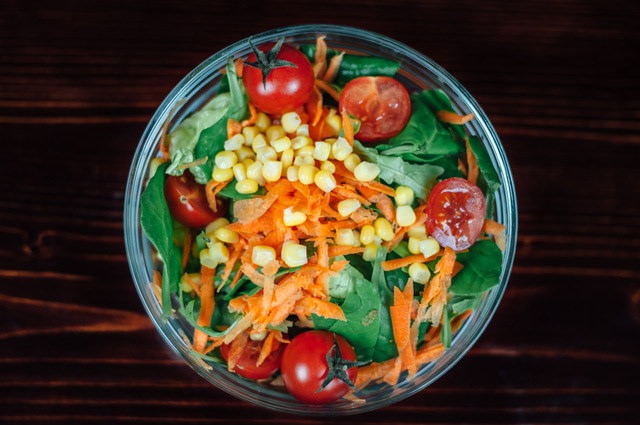Wounded Warrior Project Empowers Veterans to Live Healthier
Knowledge, Willpower Are Keys to Better Choices When Dining Out

There are different strategies we can use to help monitor that and cut down on those extra calories, fat, sugar, and sodium.
By James Herrera – Wounded Warrior Project® Physical Health and Wellness Director
Veterans know the combination of dining out and reduced physical activity can be bad for the waistline as they transition back to civilian life. But that doesn’t mean eliminating date night.
Knowledge and willpower are effective tools for enjoying a delightful, yet healthy, meal. Eating out should be special, not an excuse to over-indulge. Wounded Warrior Project® (WWP) empowers veterans to use some basic guidelines to turn a night on the town into a healthier fine-dining experience.
As an added benefit, eating healthy improves mental health. Reduced-calorie diets that include vegetables can help with depression.
When we are dining out, we are going to have more calories, bigger portion sizes, more sodium, more saturated and trans fats, more fat altogether, and a higher sugar content – all bad things. But there are different strategies we can use to help monitor that and cut down on those extra calories, fat, sugar, and sodium.
Scout the Menu in Advance
Most restaurants post their menus, including calorie count and nutritional content, online, so you can decide in advance what you’re going to order. By having a game plan before you walk through the door, you can be assured of choosing a healthier meal.
Be the first to order at the table so you’re not tempted by other choices. Stick to restaurants that specialize in grilled steaks, grilled or baked seafood, and low-carb breakfast foods like bacon and eggs.
Feel free to order healthy items from the kids and appetizer menus. Just remember to skip the entree.
Do This, Not That
Put down the cellphone and strike up a conversation. That puts you in a more relaxed mood, and it keeps you from eating too quickly. Once the food arrives, eat deliberately. Easy ways to slow down are drinking water and setting down your fork between bites or using chopsticks. That gives your stomach a chance to tell you when you’re full.
Go easy on the starches like pasta, rice, potatoes, and bread. If you are going to have them, make sure it’s a small, fist-size amount. Turn down salsa and chips, popcorn, and sugary drinks before the meal.
The websites healthydiningfinder.com and calorieking.com are great tools.
Restaurants often use grilled vegetables as a garnish, so feel free to ask for your full portion. You can also have the server put half of your meal in a to-go container before the meal is served so it’s out of sight, out of mind.
Watch Your Salads
While you should eat a salad before your meal, it’s easy to be fooled by some high-fat, high-calorie add-ons.
Have any dressing served on the side, and stick to oil-based ones you can see through. Forget belly-busting toppings like cheese, croutons, fried chicken, and shrimp. Some Caesar’s, Buffalo chicken, tuna, chef, and taco salads have more calories than a double cheeseburger.
Registering with WWP is a good way for veterans to stay on a healthy path, with access to program events that include adaptive sports, nutrition coaching, and recreational activities. To learn about how WWP's Physical Health and Wellness program is helping warriors visit https://www.woundedwarriorproject.org/programs/physical-health-wellness.
About Wounded Warrior Project
Wounded Warrior Project® (WWP) connects, serves, and empowers wounded warriors.